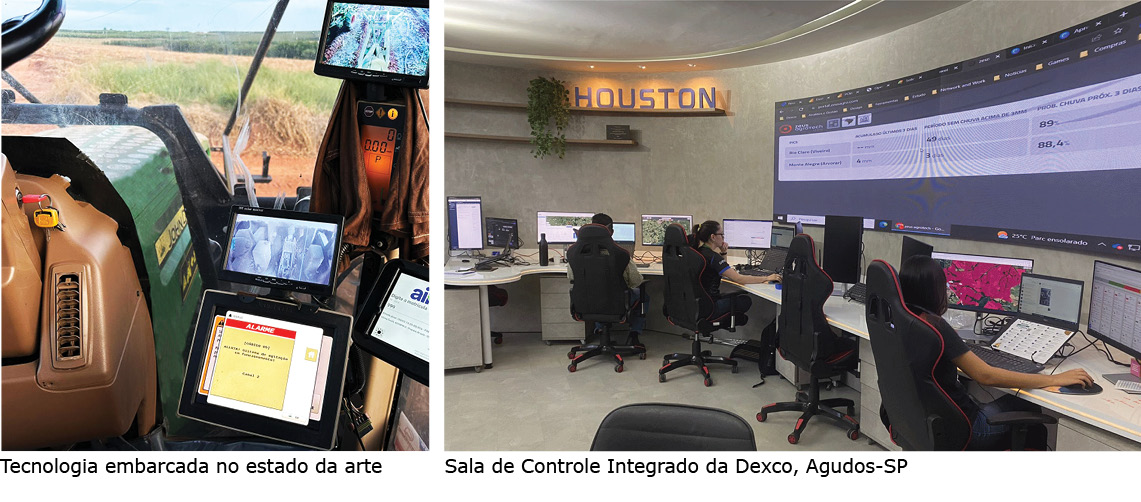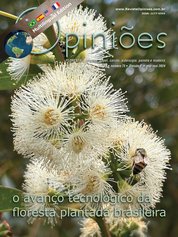Rafael Pereira Figueiredo
Executive Director of Aiko Logic Brasil
OpCP75
Driving productivity and connectivity
When discussing technologies applied to the forestry sector, a recurring theme is the difficulty of connectivity for the effective use of these solutions in the field. There are factors inherent to regions with planted forests that increase this complexity. In an initial analysis, the extensive areas with low density of machines, vehicles and people make any investment in a tower structure a challenge. Furthermore, operations in sloped areas face the relief as an obstacle to signal propagation, along with trees, which act as a natural barrier to this transmission.
Given these obstacles, implementing long-range connectivity solutions, such as LoRa, 900 megahertz radio or LTE, becomes a complex task. Such methods, which require communication towers, face difficulties due to the high initial investment for areas with low density of systems to be connected by each tower, especially considering the long harvest cycle of species such as eucalyptus and pine in Brazil.
Over the years, technology has evolved, introducing solutions such as improving mobile data networks in some forest regions in the Southeast, machine-to-machine data collection to send and receive data in remote areas, several times a day, and also solutions such as WiFi Mesh that expands the range of the WiFi signal, using satellite networks in low orbit, such as Starlink, and soon with competitors such as Kuiper (Amazon), OneWeb and AST (Google, AT&T).
Furthermore, conventional low-or high-orbit satellite connectivity solutions have been considered as alternatives due to their established national coverage, although they present disadvantages, such as low bandwidth for data transmission.
The choice of the ideal connectivity architecture may vary depending on the objectives established for implementing a new technology. This is because the investment required to obtain real-time information from systems deployed in the field includes not only the technological infrastructure, but also the hiring of specialized analysts to manage and monitor these systems. This aspect becomes even more relevant, especially when one of the goals is the ability to deal in real time with any incident that occurs.
Even before real-time monitoring of field information, an initial step is necessary, which consists of creating the foundations for the functioning of the solutions that manage this information. Firstly, the implementation of a new system generally involves a change in organizational culture, requiring the involvement of the entire operational team to ensure the effective use of the tool, including the continuous application of training and maintaining open channels to clarify doubts. It is essential to clearly communicate the expected objectives and the importance of this change for everyone involved.
Next, it is important to evaluate the structure of existing systems, ensuring that information flows in an orderly manner between integrated systems, to avoid routines that involve manual typing of information between them and ensure greater data reliability. Finally, it is essential to define the objectives and train a team of analysts to evaluate the information and propose changes according to the standard of data obtained in the field, ensuring operational changes that lead to cost reduction and greater efficiency in the management of the operation.
However, with so many connectivity options, many of which enable real-time data collection, active monitoring is crucial to maximizing the benefits of deploying new technologies in the field.
In this context, companies can seek to implement a Forest Control Tower, unifying all monitoring and management technologies implemented in the various forestry operations, including forestry, roads, harvesting, transport and yards. When implementing a Forest Control Tower, it is essential that the information processing flow is planned with a focus on mitigating deviations, identifying opportunities to increase productivity and reduce costs in real time.
This tower is made up of monitoring analysts who work together with the operation shift, actively monitoring all systems in the field and acting in real time to ensure that objectives are met, such as, for example, contacting the operation in the field to ensure that an operational deviation is corrected in a timely manner.
Once implemented, the Forest Control Tower must stand out for the intelligence embedded in its operations, differentiating itself from other operational control centers. This is because, given forest characteristics, it is crucial that automation and intelligence rules allow machines or operators to correct their behavior without direct intervention from analysts, especially in remote areas, where it is often only possible to send text messages from the tower.
With this concept, small operational situations can be handled in real time in the field, avoiding unnecessary alerts for treatment in the Forest Intelligence Tower. This frees up time for analysts to propose improvements and consolidate data for forest management systems or Enterprise Resource Planning, making the most of connectivity and data collection technologies in the field, providing efficient information management for forest-based companies.
In recent years, it has been encouraging to observe the evolution of connectivity technologies and solutions aimed at increasing productivity in the forestry sector. I firmly believe that in the coming years we will witness even more significant advances, driven by the evolution of hardware onboard, through the support of artificial intelligence in identifying patterns for decision-making and the entry of new players in the satellite connectivity market such as Amazon. It is important to highlight that, even with the promising evolution of the 5G network, this still appears to be a viable solution for forest areas.





